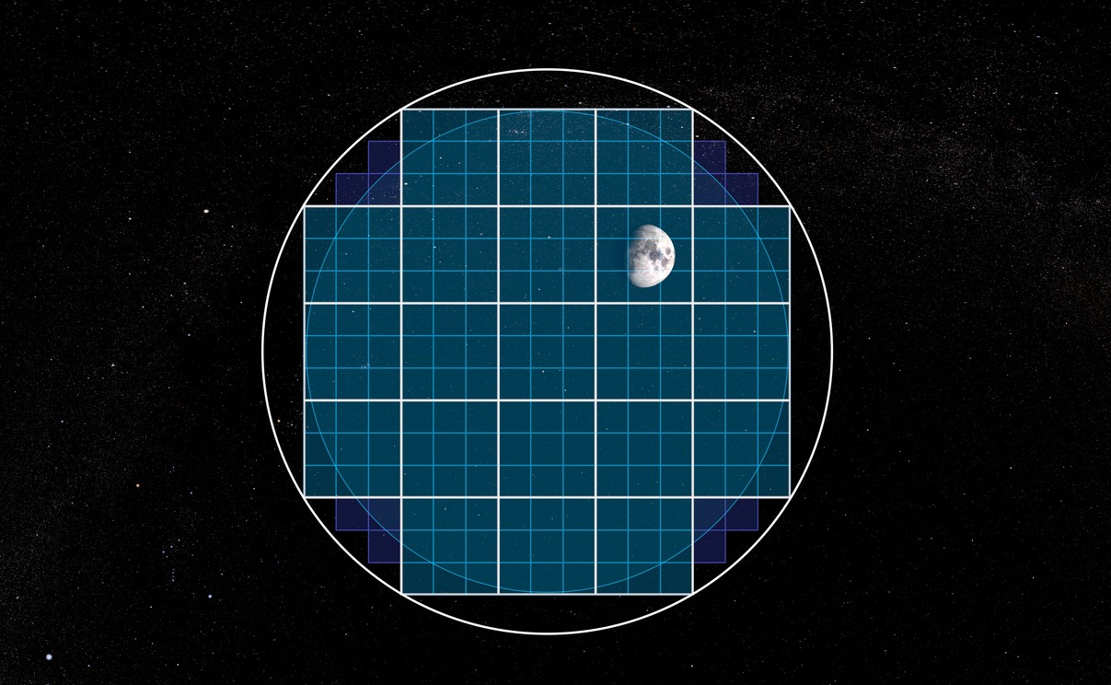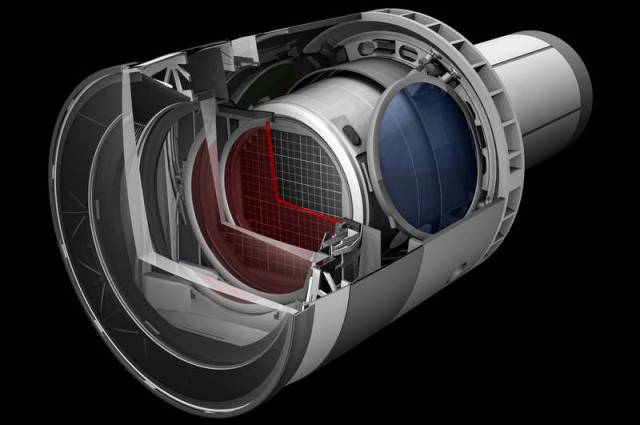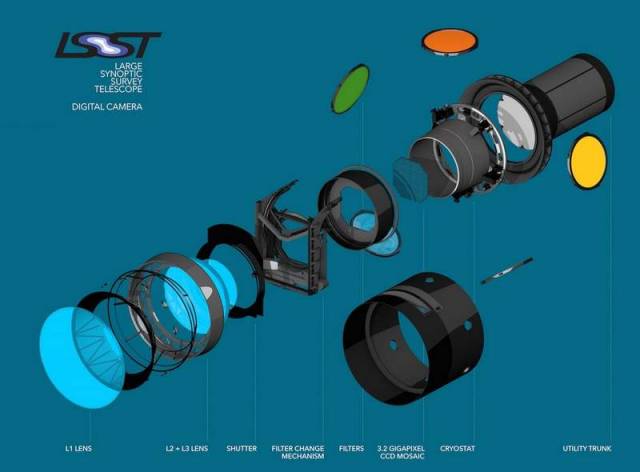The 3.2-gigapixel, world’s largest digital camera, at the heart of the Large Synoptic Survey Telescope (LSST), approved by the Department of Energy to start construction.
Assembled at the DOE’s SLAC National Accelerator Laboratory, the 3.2-gigapixel camera, which will be the size of a small car and weigh more than 3 tons, will be the eye of LSST, revealing unprecedented details of the universe and helping unravel some of its greatest mysteries.
Above: Rendering of the LSST camera. The digital camera will be the largest ever built, allowing LSST to create an unprecedented archive of astronomical data that will help researchers study the formation of galaxies, track potentially hazardous asteroids, observe exploding stars and better understand mysterious dark matter and dark energy, which make up 95 percent of the universe. (SLAC National Accelerator Laboratory)
Top image: In one shot, the Large Synoptic Survey Telescope’s 3.2-gigapixel camera will capture an area of the sky 40 times the size of the full moon (or almost 10 square degrees of sky). LSST’s large mirror and large field of view work together to deliver more light from faint astronomical objects than any optical telescope in the world. (SLAC National Accelerator Laboratory)
The construction milestone, known as Critical Decision 3, is the last major approval decision before the acceptance of the finished camera, said LSST Director Steven Kahn: “Now we can go ahead and procure components and start building it.”
Starting in 2022, LSST will take digital images of the entire visible southern sky every few nights from atop a mountain called Cerro Pachón in Chile. It will produce a wide, deep and fast survey of the night sky, cataloguing by far the largest number of stars and galaxies ever observed. During a 10-year time frame, LSST will detect tens of billions of objects—the first time a telescope will observe more galaxies than there are people on Earth – and will create movies of the sky with unprecedented details. Funding for the camera comes from the DOE, while financial support for the telescope and site facilities, the data management system, and the education and public outreach infrastructure of LSST comes primarily from the National Science Foundation (NSF).
This exploded view of the LSST’s digital camera highlights its various components, including lenses, shutter and filters. (SLAC National Accelerator Laboratory)
SLAC Director Chi-Chang Kao, said:
“We are very gratified to see everyone’s hard work appreciated and acknowledged by this DOE approval. SLAC is honored to be partnering with the National Science Foundation and other DOE labs on this groundbreaking endeavor. We’re also excited about the wide range of scientific opportunities offered by LSST, in particular increasing our understanding of dark energy.”
source SLAC








Leave A Comment